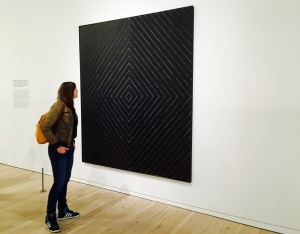Magnus Nilsson is a chef in a remote part of Jämtland. His restaurant seats only 14 people each night but it is regularly voted the best in Sweden and among the top two dozen in the world. I’ve never been to Magnus’s place or even to Scandinavia but it has a rare grip on me these days.
I first learned about Magnus in the Netflix series, Chef’s Table (I keep recommending this series here on this blog but no one ever seems to comment on it. Your loss; I think is is so inspiring for artists of all palates and palettes.) but have enjoyed a much deeper dive into his mind since buying his first book, Fäviken. I’ve been meaning to write about it here for several weeks but have waited because I can’t easily distill its pleasure into the few paragraphs I allot myself here.
Magnus, like many of the finest chefs, is an artist. But his art is not in virtuoso classical cooking or conversely in wild experimentation. Rather he is an artist who celebrates a deliberate, careful observation of the world around him and creates work that makes us experience life more vividly.
His restaurant typically serves up to thirty courses per meal, courses made up primarily of ingredients found in the surrounding forest. He uses burnt stumps, sheets of moss, and last autumn’s leaves. Most of his game he himself hunted and recently. His beef comes from old dairy cows, hung and aged for many months. He raises his lambs alongside his children, then weeps as he slices their wooly throats (the lambs, not the kids).
His dishes include:
- A little lump of very fresh cheese, floating in warm whey with one petal of lavender
- Very light broth of pig filtered through moss
- Leeks picked just minutes ago, sheep’s cream whisked with mead, grated cod’s roe
- Pine tree bark cake, pudding of milk and cream, acidic herbs and frozen buttermilk, grated hydnellum suaveolens
- A tiny slice of top blade from a retired dairy cow, dry aged for nine months, crispy reindeer lichen fermented green gooseberries, fennel salt
Does this sound precious and effete? Not to me. Hearing him speak or write about his process is to realize what it means to be 100% in tune with one’s surroundings, to appreciate the bounty of the surrounding land, to recognize the difference that a few minutes makes to an ingredient’s flavor, to be absolutely present and to believe in doing things well or not at all.
…is the guy just an anal, Nordic lunatic?
My favorite page is called “Giving a Carrot the Attention It Deserves” and covers how to grow the right variety for your climate and soil type, what the weather should be like when you pull it, how to correctly pare one’s fingernails before handling the carrot, how cool the rinsing water must be, how to hold the carrot when rinsing, the right type of peeler to use and how old it should be, the right angle to wield it, down to which way to lay the peeled carrot on the plate. I first read this page, out of context, and thought, is the guy just an anal, Nordic lunatic?
But when I read it again, after reading all the pages that preceded it, I realized the purpose of his obsession. It is about care, about doing things the right way, about recognizing the essential, a kind of honor that Hemingway would have recognized. Doing things right is very hard, but the purpose is not to be exclusive or judgmental. It is to celebrate life by living it well. And it is to show the rest of us that each day can be gulped down whole or savored thoughtfully.
He concludes this page by saying: “The questions you must ask yourself about every detail are these: does this make the end result better, and do I have the time and capacity to do it at the moment? If the answer to either of these questions is no, do it in a different but equally thought-through way that better suits the needs and possibilities available to you. The important idea is not always to do things without compromise, but with thought-through attention and decisions that lead, little by little, towards creating a better result.”
The recipes in this book are uncookable unless you have 10,000 acres of Swedish wilderness and a very special mind. But I can taste their wisdom on the page, can learn from their philosophy, and apply it to the bowl of Raisin Bran I’m about to make. And the drawing I’ll do right after.





